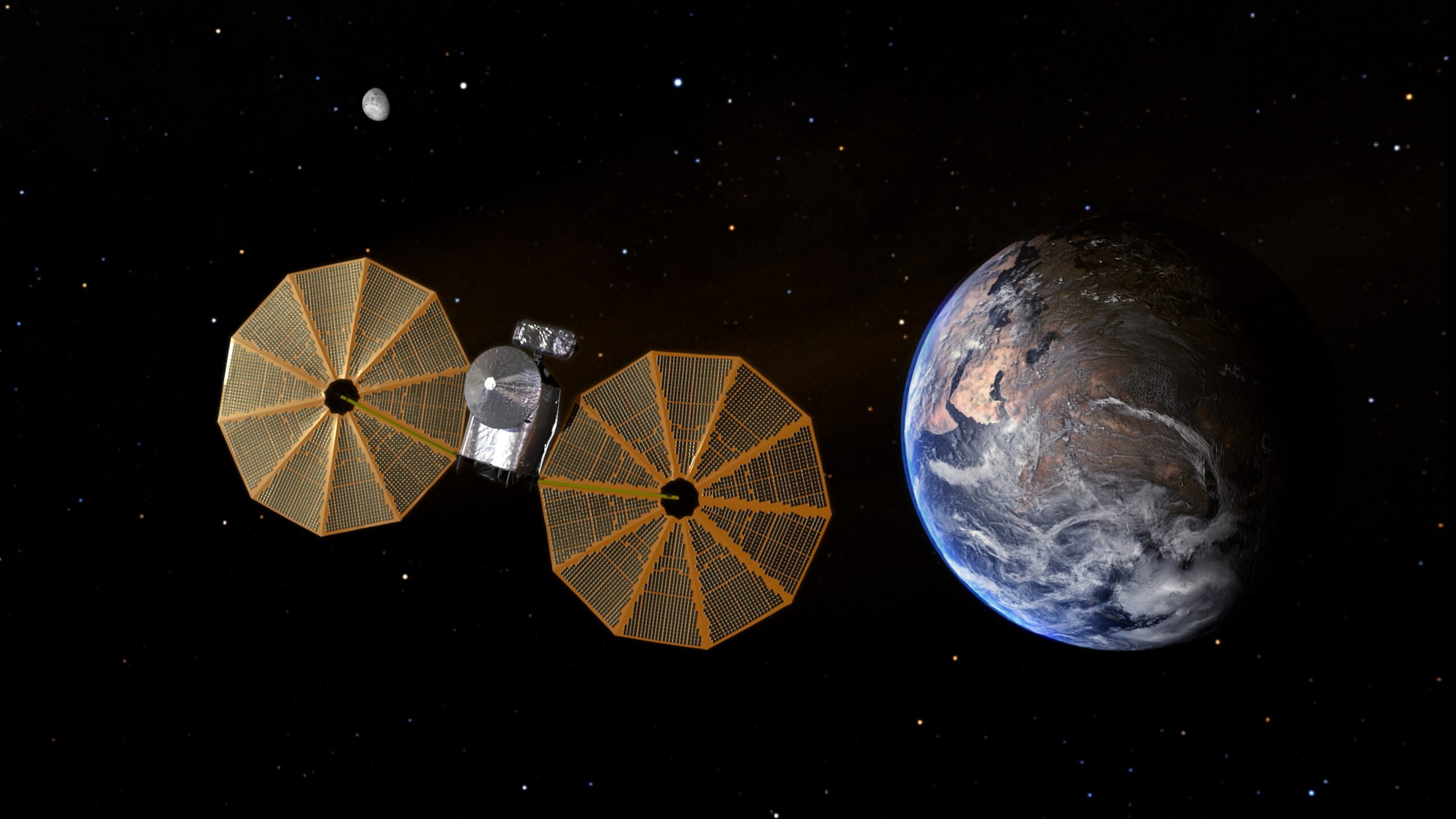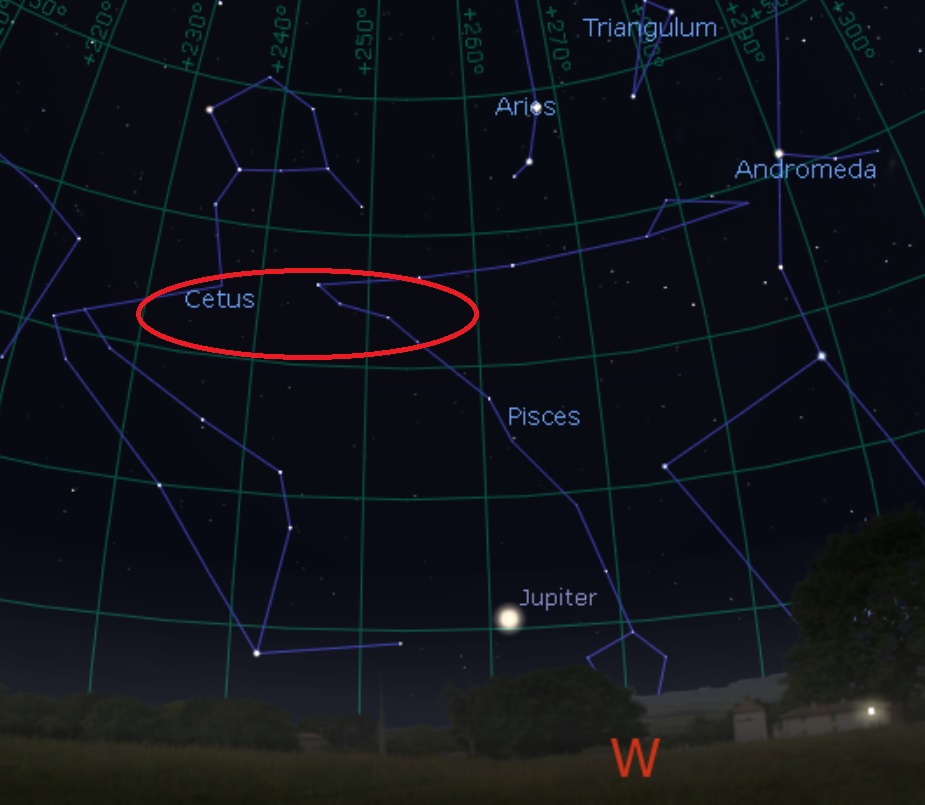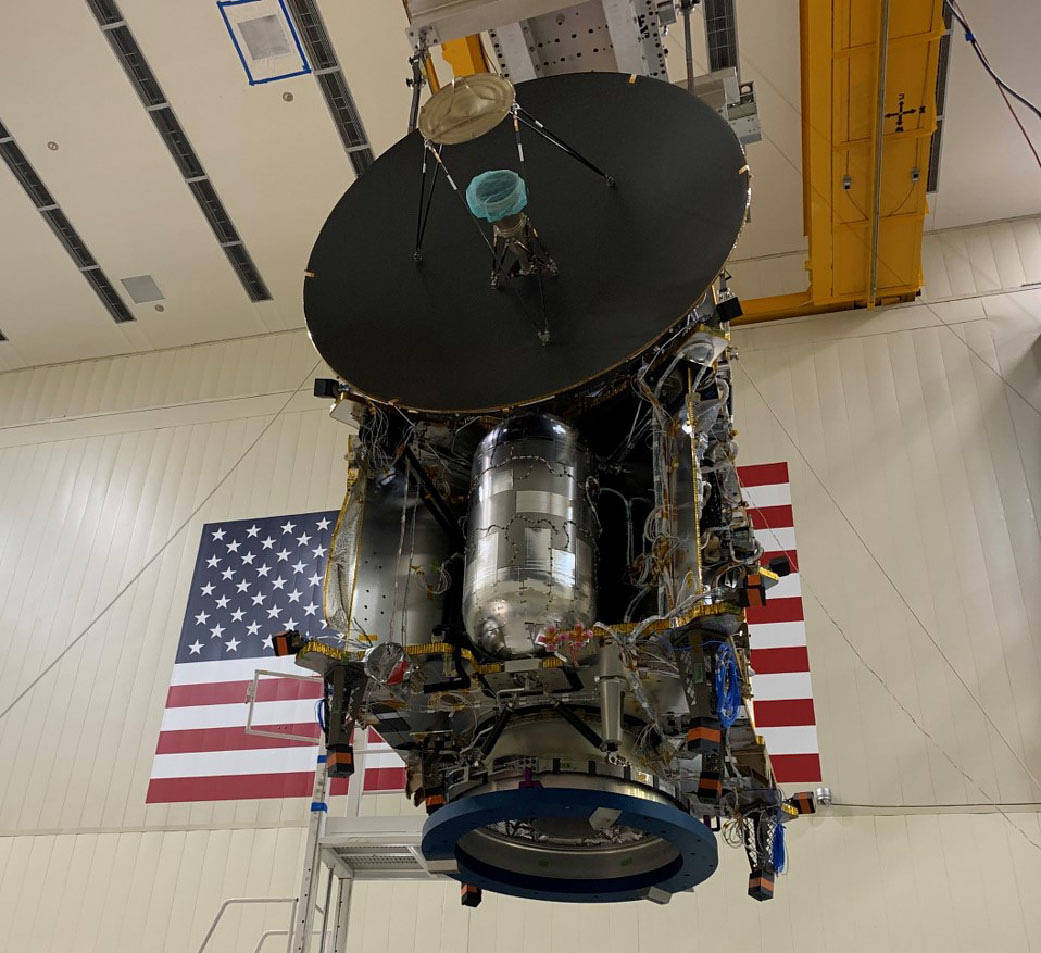With a little luck, observers in Australia and western North America may spy the Lucy spacecraft as it flies by Earth on October 16th.

NASA
NASA’s Lucy mission — the first dedicated mission to Jupiter’s Trojan asteroids — pays the Earth a visit this weekend. Dipping as low as 350 kilometers (220 miles), within satellites' low-Earth orbits, Lucy will briefly become visible to observers in Australia and western North America.
When and Where to Look

NASA
Lucy's closest approach to Earth occurs Sunday, October 16th at 7:04 a.m. EDT / 11:04 UT. That’s in the range of low-Earth orbit (LEO), the same orbital altitude region as the Hubble Space Telescope and the International Space Station. Lucy will be imaging Earth as it approaches the planet from the sunward direction. Controllers have provisions for a short engine burn if needed to avoid space debris.

NASA
Folks “Down Under” will have the best view: Lucy passes over western Australia at dusk, emerging out of the Sun’s glare at 10:55 UT (6:55 local time). For observers in Perth, Australia, the spacecraft will first appear to the west about 30° above the horizon, crossing the constellation Ophiuchus. Lucy will appear to the unaided eye as a fast-moving “star,” shining at 1st to 2nd magnitude, roughly the brightness of the southern star Fomalhaut.
From there, the mission hits Earth’s shadow, at 11:02 UT, before reemerging on the other side of the Pacific Ocean at 11:26 UT (4:26 a.m. Pacific / 5:26 a.m. Mountain Time) over the U.S. southwest. Now fainter and outbound, Lucy will be a binocular object at 6th to 7th magnitude. Lucy will emerge from shadow along the Cetus / Pisces border.

SWRI
Here’s Lucy's elevation above the horizon for respective locations at the key time it emerges from Earth’s shadow:
- Los Angeles: +36 degrees
- Boise: +26 degrees
- Denver: +23 degrees
- Seattle: +26 degrees
- Tucson: +28 degrees

Dave Dickinson / Stellarium
For the most accurate pointing instructions, your best bet is NASA’s JPL Horizons Ephemeris generator tool. NASA has a page up dedicated to step by step instructions on how to use the tool.
If you're not in the right place to see the event, you can follow along online with astronomer Gianluca Masi, with the Virtual Telescope Project: Watch live here.
Heavens-Above also now has a page dedicated to tracking Lucy during its flyby Sunday.
NASA also encourages observers to #WaveToLucy and #SpotTheSpacecraft on social media.
The Lucy Mission
This flyby comes exactly one year after launch, during which time Lucy has traveled almost 1 billion kilometers (580 million miles). This weekend's close pass, plus another in December 2024, will give Lucy the boost it needs to visit the mission’s first target, main-belt asteroid 52246 DonaldJohanson in 2025.
The mission will then head past six asteroids in the leading Trojan swarm, before making a third Earth flyby in 2030 en route to the mission’s final target, the 617 Patroclus-Menoetius asteroid pair in the trailing Trojan camp in 2033. All told, the Lucy mission will visit a record-breaking nine asteroids.

NASA / Nancy Neal Jones
After launch, the Lucy team battled a stubborn solar array — one of two that powers the spacecraft — that refused to open completely. However, efforts over the summer opened it to 357 of a full 360 degrees, and mission controllers are confident that the second panel will be able to provide power to the spacecraft throughout its mission.
Lucy also obtained an unexpected bonus target when astronomers discovered that asteroid 15094 Polymele — one of the objectives among the leading Trojans — has a small moon, nicknamed Shaun by the team, discovered during a stellar occultation on March 26, 2022.
This flyby is only among the first steps of a decade-long mission, with much more to come.
 2
2









Comments
Anthony Barreiro
October 14, 2022 at 11:42 pm
Sirius is visual magnitude -1.4, nine times brighter than a first magnitude star and 23 times brighter than second magnitude. If Lucy is first or second magnitude as seen from Australia, that would look more like Fomalhaut or the stars of Orion's belt.
You must be logged in to post a comment.
Frank-ReedNavigation.com
October 16, 2022 at 1:27 pm
"shining at 1st to 2nd magnitude, roughly the brightness of the southern star Fomalhaut."
Yes, not Sirius! Thank you for fixing that. At its brightest, directly under the track in northern Australia, it could have been as bright as Fomalhaut. Near Perth, well south of the tack, something like magnitude 4.0, maybe? Or from Timor, north of the track, magnitude 3.0?
You must be logged in to post a comment.
You must be logged in to post a comment.